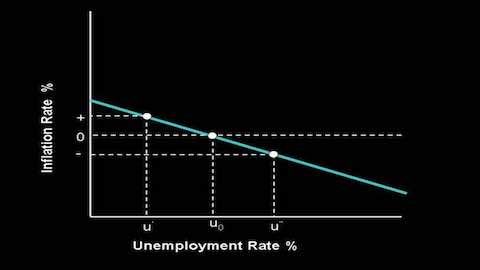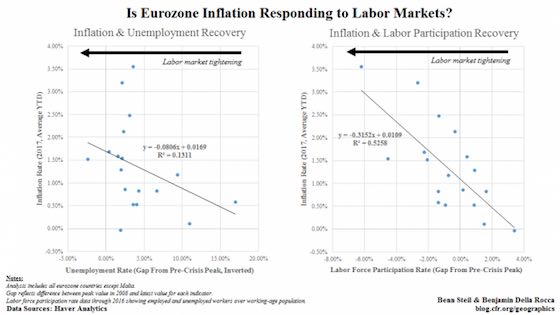- MENU
- HOME
- SEARCH
- WORLD
- MAIN
- AFRICA
- ASIA
- BALKANS
- EUROPE
- LATIN AMERICA
- MIDDLE EAST
- United Kingdom
- United States
- Argentina
- Australia
- Austria
- Benelux
- Brazil
- Canada
- China
- France
- Germany
- Greece
- Hungary
- India
- Indonesia
- Ireland
- Israel
- Italy
- Japan
- Korea
- Mexico
- New Zealand
- Pakistan
- Philippines
- Poland
- Russia
- South Africa
- Spain
- Taiwan
- Turkey
- USA
- BUSINESS
- WEALTH
- STOCKS
- TECH
- HEALTH
- LIFESTYLE
- ENTERTAINMENT
- SPORTS
- RSS
- iHaveNet.com: Economy

The Phillips Curve
by Benn Steil and Benjamin Della Rocca (Council on Foreign Relations)
The so-called Phillips curve phenomenon in economics holds that, all else being equal, a fall in unemployment should lead to a rise in inflation. That relationship has been subjected to much critical theoretical and empirical scrutiny over recent decades.
"I am confident that the apparent disconnect between growth and inflation is a temporary phenomenon," said ECB executive board member Yves Mersche on December 6. The "deep downturn" in the Eurozone economy, he explained, had "led to broader slack in the labor market" not captured in the unemployment data. As that slack dissipates, inflation will pick up.
Is he right?
The so-called Phillips curve phenomenon in economics holds that, all else being equal, a fall in unemployment should lead to a rise in inflation. That relationship has been subjected to much critical theoretical and empirical scrutiny over recent decades. We investigated how well it has held in the Eurozone since 2008, at the beginning of the financial crisis.

As the top left graphic shows, the relationship is weak. Falling unemployment is not materially boosting inflation. But when we broaden the analysis to encompass the phenomenon alluded to by Mersche -- the existence of a hidden army of "discouraged workers," not reflected in the unemployment data, who hold down inflation even as the unemployment rate falls -- the relationship becomes much stronger. This can be seen clearly in the top right graphic.
The lesson is that the Phillips curve is alive and well, but only when falling unemployment is understood more broadly as rising labor force participation (LFP). This fact suggests that the Fed is also right to expect inflation to rise as the labor market continues to tighten, but that it is the LFP rate that sends the clearest signal on timing.
Article: Courtesy Council on Foreign Relations.
CFR's Blogs represent the views of CFR fellows and staff and not those of CFR, which takes no institutional positions.
WORLD | AFRICA | ASIA | EUROPE | LATIN AMERICA | MIDDLE EAST | UNITED STATES | ECONOMY | EDUCATION | ENVIRONMENT | FOREIGN POLICY | POLITICS
Economy: "The Phillips Curve"